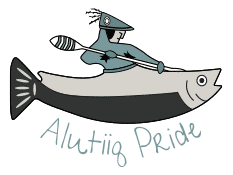ANILCA
Alaska National Interest Lands Conservation Act

President Carter signs the Alaska National Interest Lands Conservation Act
The Legacy
of ANILCA
When oil was discovered in Prudhoe Bay in 1968, the U.S. Congress took particular interest and started the discussion on Alaska Native land claims so the Trans-Alaska oil pipeline could be constructed. Congress passed the Alaska Native Claims Settlement Act (ANCSA) in 1971, which established a structure with regional and village corporations, conveyed 44 million acres of land, and provided almost a billion dollars in compensation. ANCSA did not address Alaska Native hunting and fishing rights, which the Congressional Conference Committee acknowledged was left out and passed on to the Secretary of the Interior and the State of Alaska to address. It took many years, but Congress directly addressed subsistence when it passed the Alaska National Interest Lands Conservation Act (ANILCA), which was signed into law on December 2, 1980.
Title VIII took measures to protect subsistence rights for rural Alaskans, not Alaska Natives, as it is written that all Alaskans with rural status have a priority to harvest and use wild resources on federal public lands.
The federal government allowed the Alaska state government to enforce subsistence priority on federal public lands until 1989. In 1988, the Alaska Ninth Circuit Court of Appeals decided that the state’s definition of “rural” was not in accordance with ANILCA in Kenaitze Indian Tribe v. State of Alaska. The state fell out of compliance with ANILCA, which forced the federal government take over management of federal public lands in Alaska in 1990. The Federal Subsistence Management Program and the Office of Subsistence Management were formed to ensure that the federal government upheld its responsibility to provide rural residents subsistence priority.


